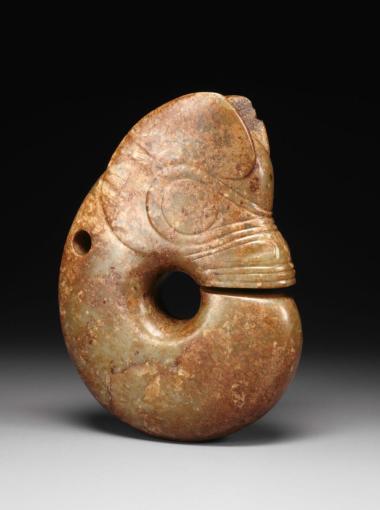This bodhisattva head, framed by a hairdo with long drawn-out locks endowed with “decorative naturalism,” is crowned with a tiara consisting of three medallions with pearl trimmings: two with lotus-flower rosace motifs and one presenting a floral décor recalling several motifs of Indian Gupta-style haloes. The use of moulds, inherited from Gandhara, allows to add hairdos and adornments distinguishing the personages. However, these figures were completed by hand.
The features of this face, characteristic of a late period, proceed from a more elaborate stylisation than that of earlier periods, emphasising the pure, almost round oval; the bridge of the nose is also more angular and marked, the eyeballs more bulging, while the eyebrows shade off sooner on the forehead. The skilfully modelled mouth has become smaller, but retains the expression of an ecstatic half-smile in keeping with the personage’s iconography. This new style, that would become very popular in Central Asia, shows less concern with anatomical truth to the benefit of a plastic formalism giving the utmost expressivity to a bodhisattva’s idealised countenance.
This piece comes from the Toqquz-sarai monastery in the Xinjiang, the most important Buddhist complex of the Kucha kingdom on the North road of the Silk Roads. Missionaries, as early as the first century AD, had undertaken through those trade routes to convert the Indo-European peoples of the Tarim Basin, bringing Gandhara art with them. We may consider that this type of Bodhisattva head belonged to a group of cult statues, formed of two bodhisattvas framing a Buddha, whose head was found. The vestiges of three bases sanction the thesis of the presence of such a triad.

